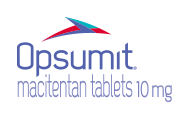Ontario PAH Patients Rally to Demand Public Funding of Drug Opsumit

Residents of the Canadian province of Ontario affected by pulmonary arterial hypertension (PAH) gathered at the Queen’s  Park provincial legislature in Toronto this week in hope of convincing Ontario’s Health Minister Dr. Eric Hoskins to make the drug Opsumit (macitentan) publicly accessible as a treatment option for Ontario PAH patients. According to the Pulmonary Hypertension Association of Canada, Opsumit is the only oral treatment proven in a randomized controlled trial to reduce long-term morbidity in patients, including reductions in PAH worsening and hospitalizations.
Park provincial legislature in Toronto this week in hope of convincing Ontario’s Health Minister Dr. Eric Hoskins to make the drug Opsumit (macitentan) publicly accessible as a treatment option for Ontario PAH patients. According to the Pulmonary Hypertension Association of Canada, Opsumit is the only oral treatment proven in a randomized controlled trial to reduce long-term morbidity in patients, including reductions in PAH worsening and hospitalizations.
PAH is a rare but serious, progressive, and potentially fatal lung disease characterized by high blood pressure in the arteries of the lungs. In PAH, the arteries (blood vessels) of the lungs become narrowed by scar tissue, sometimes to the point of being completely closed. Persons affected by PAH suffer from high blood pressure in the lungs, which results in strain and enlargement of the heart, ultimately leading to heart failure. PAH is also a common complication of scleroderma, a chronic hardening and contraction of the skin and connective tissue. Not all causes of PAH are known, and while any demographic can develop PAH, it affects almost four times as many women as men.
Because PAH shares many symptoms with other diseases, lengthy delays in diagnosis and misdiagnosis are frequent. There is currently no cure for PAH, and if left untreated, patients live an  average of two to three years. According to the drug’s manufacturer, Actelion Pharmaceuticals, Ltd., Opsumit can improve PAH patients’ ability to exercise, relieve some other disease symptoms, and help slow its progression. Opsumit is a category of drug called an endothelin receptor antagonist (ERA), designed to open narrow blood vessels between the heart and lungs, and is indicated for treatment of PAH (WHO Group I) to delay disease progression, which can include initiation of intravenous or subcutaneous prostanoids, or clinical worsening.
average of two to three years. According to the drug’s manufacturer, Actelion Pharmaceuticals, Ltd., Opsumit can improve PAH patients’ ability to exercise, relieve some other disease symptoms, and help slow its progression. Opsumit is a category of drug called an endothelin receptor antagonist (ERA), designed to open narrow blood vessels between the heart and lungs, and is indicated for treatment of PAH (WHO Group I) to delay disease progression, which can include initiation of intravenous or subcutaneous prostanoids, or clinical worsening.
Opsumit’s effectiveness was established in a long-term study in PAH patients with predominantly WHO Functional Class II-III symptoms, treated for an average of two years. The company says the study, which compared 242 patients taking Opsumit with 250 patients not taking it, was the largest trial of any FDA-approved PAH treatment. Patients were treated with Opsumit monotherapy or in combination with phosphodiesterase-5 inhibitors or inhaled prostanoids. Patients had idiopathic and heritable PAH (57%), PAH caused by connective tissue disorders (31%), and PAH caused by congenital heart disease with repaired shunts (8%).
“On behalf of the Pulmonary Hypertension Association of Canada and the Scleroderma Society of Ontario, we are calling on the Ontario government to urgently fund Opsumit as an option for those living with PAH, a rare, serious and complex lung disease,” says Anna McCusker, executive director of the Scleroderma Society of Canada and Ontario. “Our community should be feeling hopeful today to have an important new therapy for this highly-individualized condition, made more complex when caused by scleroderma. Instead, we are extremely concerned that the lack of access to Opsumit will lead to undue and avoidable patient suffering.”
Opsumit Inaccessible Despite Funding Recommendation
Two years ago, Health Canada’s approval of Opsumit offered new hope for adult PAH patients and their physicians. In January 2015, the PAH community was further encouraged by the Common Drug Review (CDR) recommendation that Opsumit be publicly funded for the treatment of PAH to reduce morbidity (severity of illness).
However, PAH Canada notes that despite the positive CDR funding recommendation, Ontarians affected by PAH still do not have publicly funded access through the Ontario Public Drug Program (OPDP). As such, Ontario physicians are limited to prescribing Opsumit only to PAH patients with private health insurance, or the ability to pay out-of-pocket.
 “It is unacceptable that for the past year, Ontario PAH patients who rely on the public drug plan have been prevented from accessing Opsumit because we as PAH specialists are unable to exercise the individual clinical judgment that is essential to the proper treatment of this disease,” says Dr. Sanjay Mehta, MD, FRCPC, FCCP, director of the Southwest Ontario Pulmonary Hypertension Clinic at the London Health Sciences Center in London, Ontario, and chair of PHA Canada. “Our community is very willing to work with government to resolve this situation, but we are also here today to remind elected officials and decision-makers of the devastating consequences of taking treatment decisions out of the experienced hands of PAH medical experts.”
“It is unacceptable that for the past year, Ontario PAH patients who rely on the public drug plan have been prevented from accessing Opsumit because we as PAH specialists are unable to exercise the individual clinical judgment that is essential to the proper treatment of this disease,” says Dr. Sanjay Mehta, MD, FRCPC, FCCP, director of the Southwest Ontario Pulmonary Hypertension Clinic at the London Health Sciences Center in London, Ontario, and chair of PHA Canada. “Our community is very willing to work with government to resolve this situation, but we are also here today to remind elected officials and decision-makers of the devastating consequences of taking treatment decisions out of the experienced hands of PAH medical experts.”
History Set To Repeat Itself?
PAH Canada observes that delays in accessing much-needed therapies are all too familiar for the PAH community. Between 2008–09, the OPDP made a decision that restricted PAH patients’ treatment options to a stepped approach, requiring specialists to follow a set procedure and prescribe medications in a particular order rather than as they felt would most benefit their patients.
One Ontario mother died as a result of restricted access to treatment. This patient, whose story made front-page news, was told by the province that a certain medication prescribed by her specialist would be covered only if she scaled back her treatment and stopped another effective drug. When she did, her condition deteriorated rapidly. As the result of her death and advocacy efforts by the PAH community, the OPDP removed the restrictions.
 “The PAH community was grateful to see the province abolish the procedure that enforced a one-size-fits-all approach to treating this complex disease, but six years later, we are worried that since the province has not yet listed Opsumit, we find ourselves in a similarly precarious position,” says Ruth Dolan, director at PHA Canada and co-leader of the Toronto PH Support Group, and mother to a PAH patient. “We urge Health Minister Eric Hoskins to immediately make this treatment accessible to PAH patients who rely on public funding. Treatment decisions for this complex disease must be left in the hands of specialists who are best able to assess their patients’ individual needs, benefiting their long-term health at diagnosis and beyond.”
“The PAH community was grateful to see the province abolish the procedure that enforced a one-size-fits-all approach to treating this complex disease, but six years later, we are worried that since the province has not yet listed Opsumit, we find ourselves in a similarly precarious position,” says Ruth Dolan, director at PHA Canada and co-leader of the Toronto PH Support Group, and mother to a PAH patient. “We urge Health Minister Eric Hoskins to immediately make this treatment accessible to PAH patients who rely on public funding. Treatment decisions for this complex disease must be left in the hands of specialists who are best able to assess their patients’ individual needs, benefiting their long-term health at diagnosis and beyond.”
Women can only receive Opsumit through a restricted program called the Opsumit Risk Evaluation and Mitigation Strategy (REMS) Program. Patients who can get pregnant must talk to their healthcare provider, understand the benefits and risks of Opsumit, and agree to all of the instructions in the Opsumit REMS Program. Men can receive Opsumit without taking part in the Opsumit REMS Program.
The Opsumit REMS Program is required by the U.S. Food and Drug Administration (FDA) to manage serious risks associated with a drug product by informing prescribers, patients, and pharmacists about the risk of birth defects and safe-use conditions for Opsumit, and to minimize the risk of fetal exposure and adverse fetal outcomes in females of reproductive potential.
All healthcare providers must enroll in the Opsumit REMS Program and comply with REMS requirements to prescribe Opsumit. Women of reproductive potential and pre-pubertal girls are required to be counseled on the risks of Opsumit. Women of reproductive potential are required to get monthly pregnancy testing.
Certified pharmacies that dispense Opsumit for outpatients must enroll in the Opsumit REMS Program and agree to the REMS requirements. Pharmacies that supply inpatient use of Opsumit must also be certified by enrolling in the Opsumit REMS Program and agreeing to the REMS requirements.
Notes:
1) Pulido T, Adzerikho I, Channick RN, Delcroix M, Gali N, Ghofrani H-A, et al (2013). Macitentan and Morbidity and Mortality in Pulmonary Arterial Hypertension. New England Journal of Medicine. 369(9). pp.809-818. Retrieved from https://www.nejm.org/doi/pdf/10.1056/NEJMoa1213917. Accessed on December 1, 2015.
2 Health Canada. Drugs and Health Products Opsumit. Retrieved from https://www.hc-sc.gc.ca/dhp-mps/prodpharma/sbd-smd/drug-med/sbd_smd_2013_opsumit_161372-eng.php. Accessed on December 1, 2015.
3 Common Drug Review. CDEC Notice of Final Recommendation. Retrieved from https://www.cadth.ca/sites/default/files/cdr/complete/cdr_complete_SR0364_Opsumit_Jan-30-15.pdf. Accessed on December 1, 2015.
4 Progress in Ontario for patients with uncommon but serious lung disorder, but more access to current treatments still needed [news release]. Toronto, ON: Pulmonary Hypertension Association of Canada; May 15, 2009. https://www.newswire.ca/news-releases/progress-in-ontario-for-patients-with-uncommon-but-serious-lung-disorder-but-more-access-to-current-treatments-still-needed-537726201.html. Accessed on December 1, 2015.
5 Leeder J. Funding for rare-disease therapy under the microscope. The Globe and Mail. November 2, 2009. https://www.theglobeandmail.com/news/national/funding-for-rare-disease-therapy-under-the-microscope/article1347968/. Accessed on December 1, 2015.
For more information, visit:
https://www.phacanada.ca
or
https://www.sclerodermaontario.ca
Sources:
Pulmonary Hypertension Association of Canada
Scleroderma Society of Canada and Ontario
Actelion Pharmaceuticals, Ltd.
Ontario Legislature







